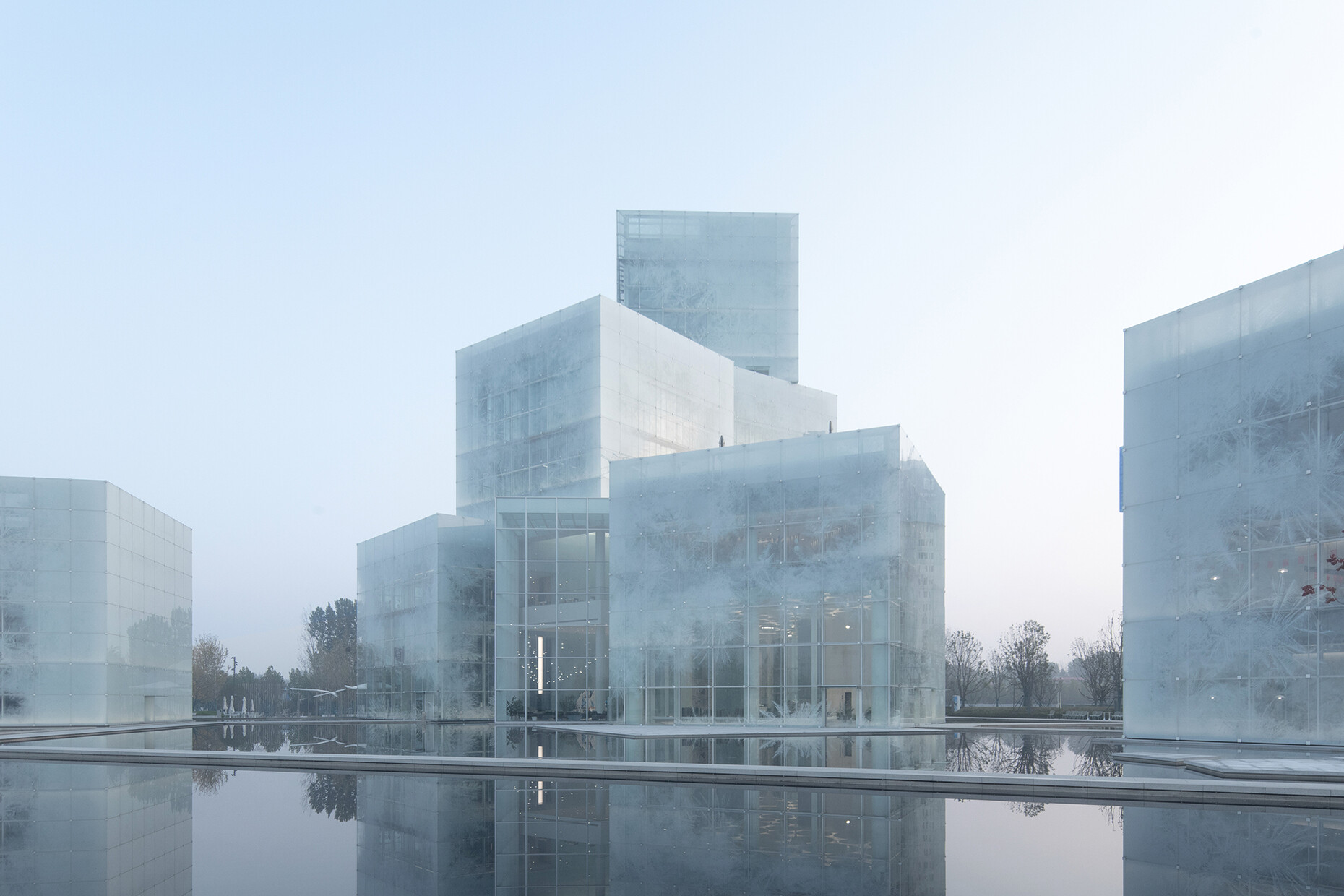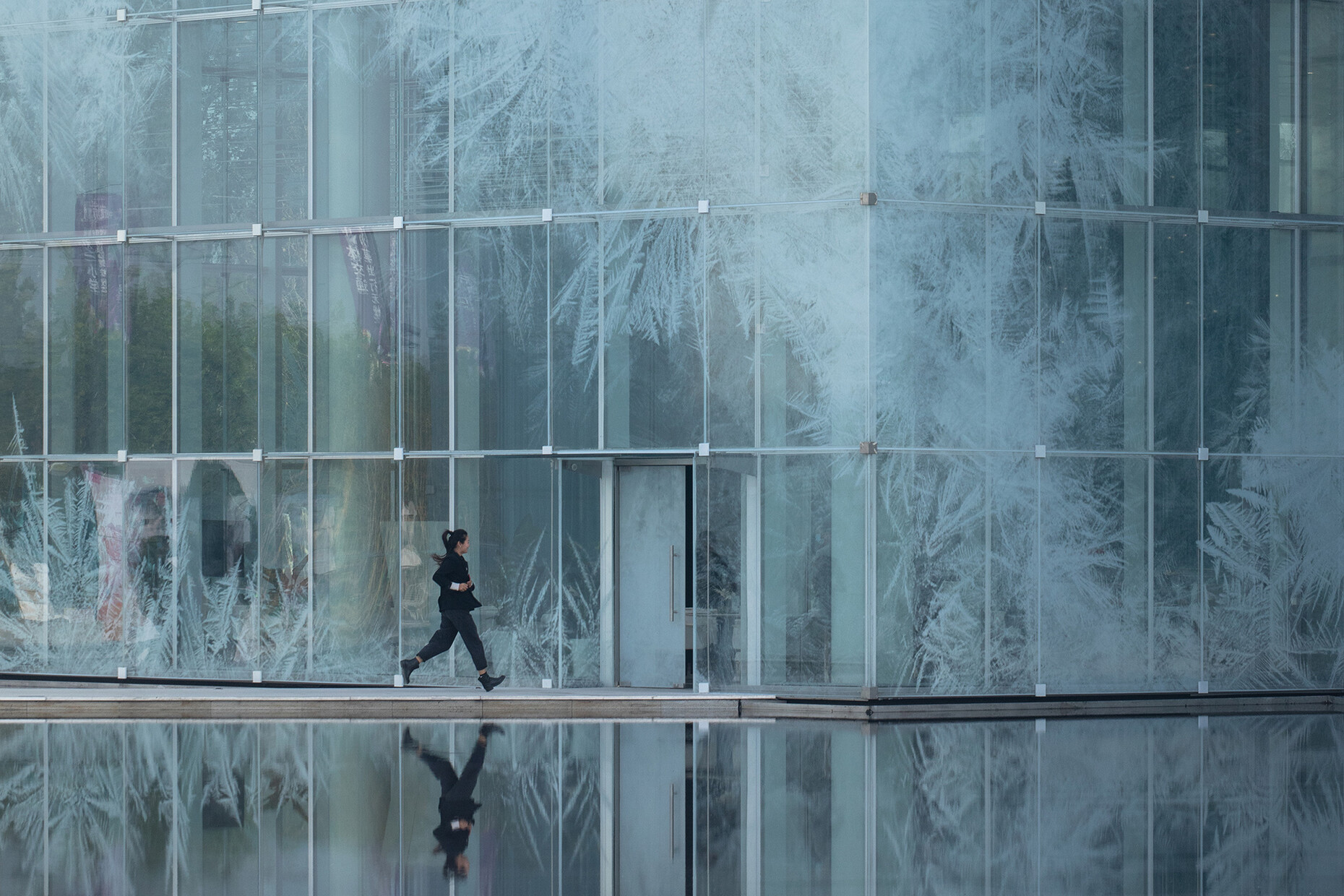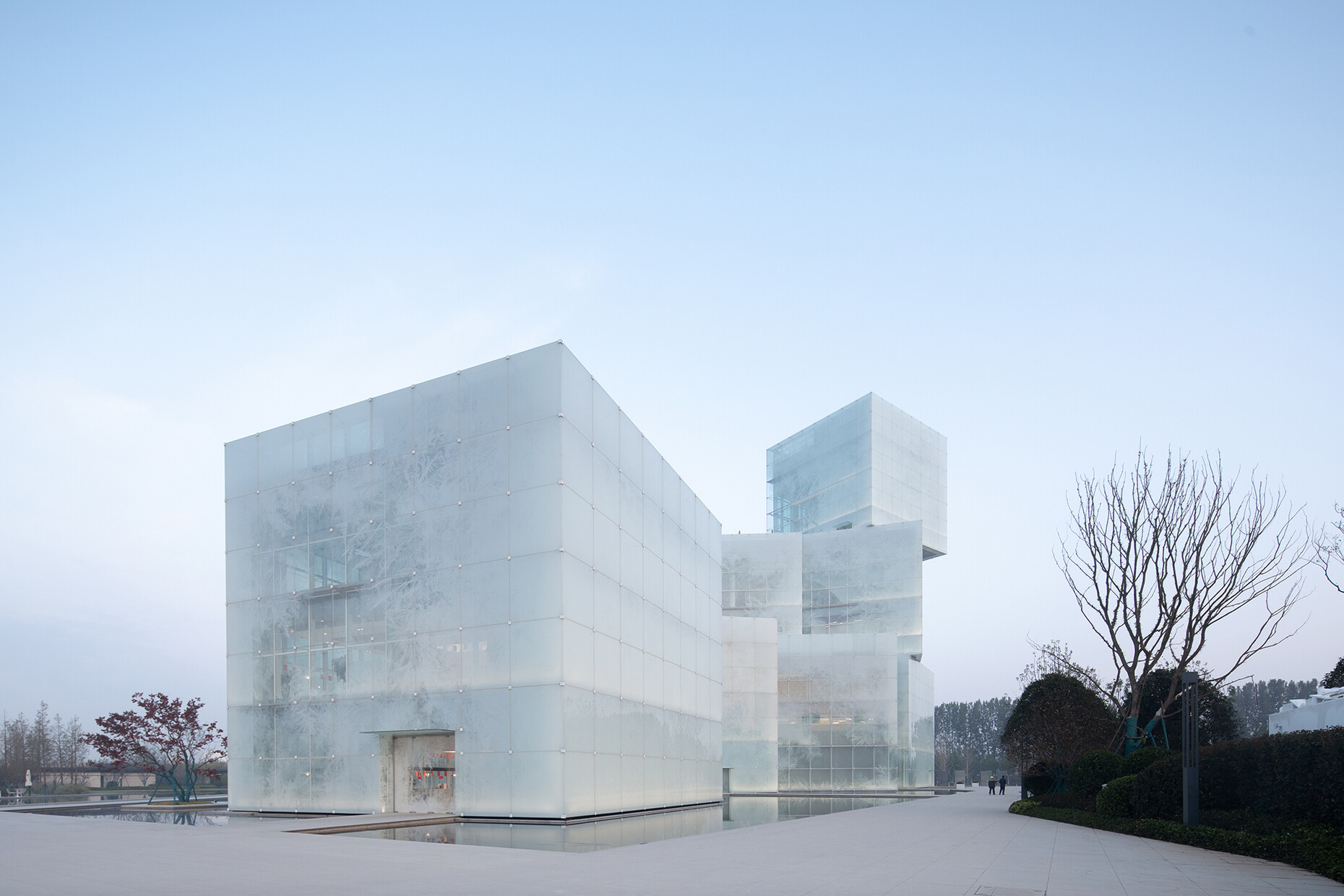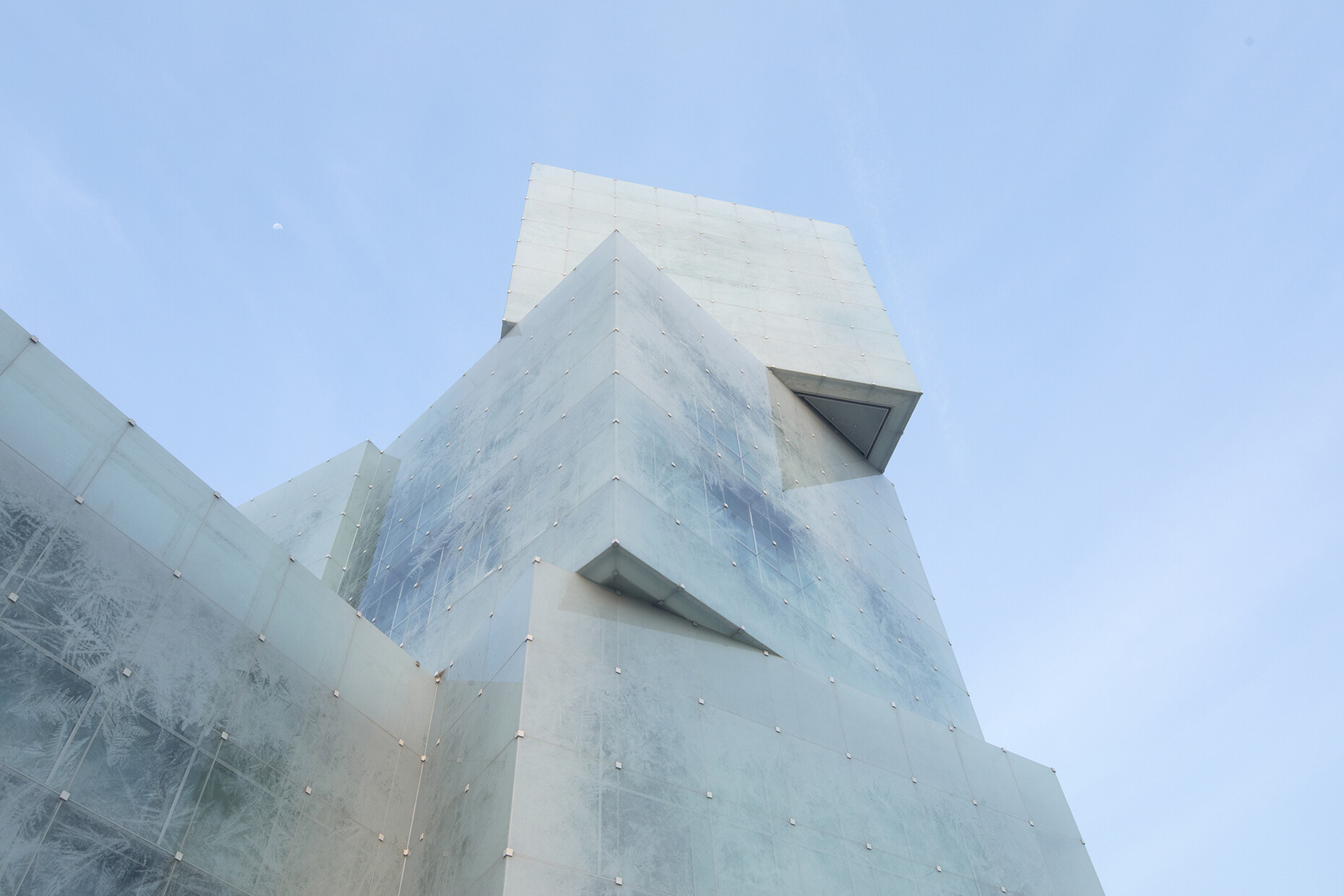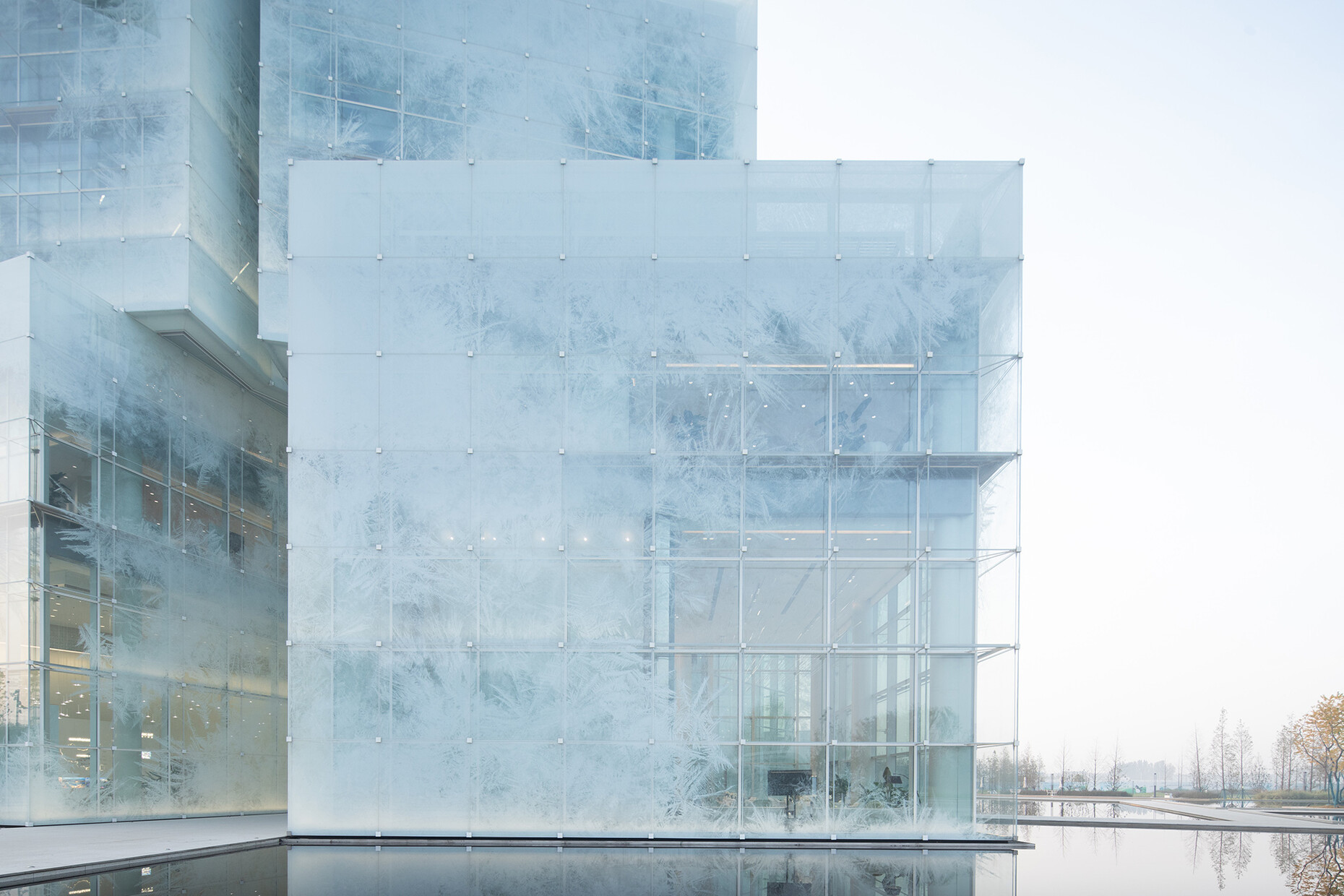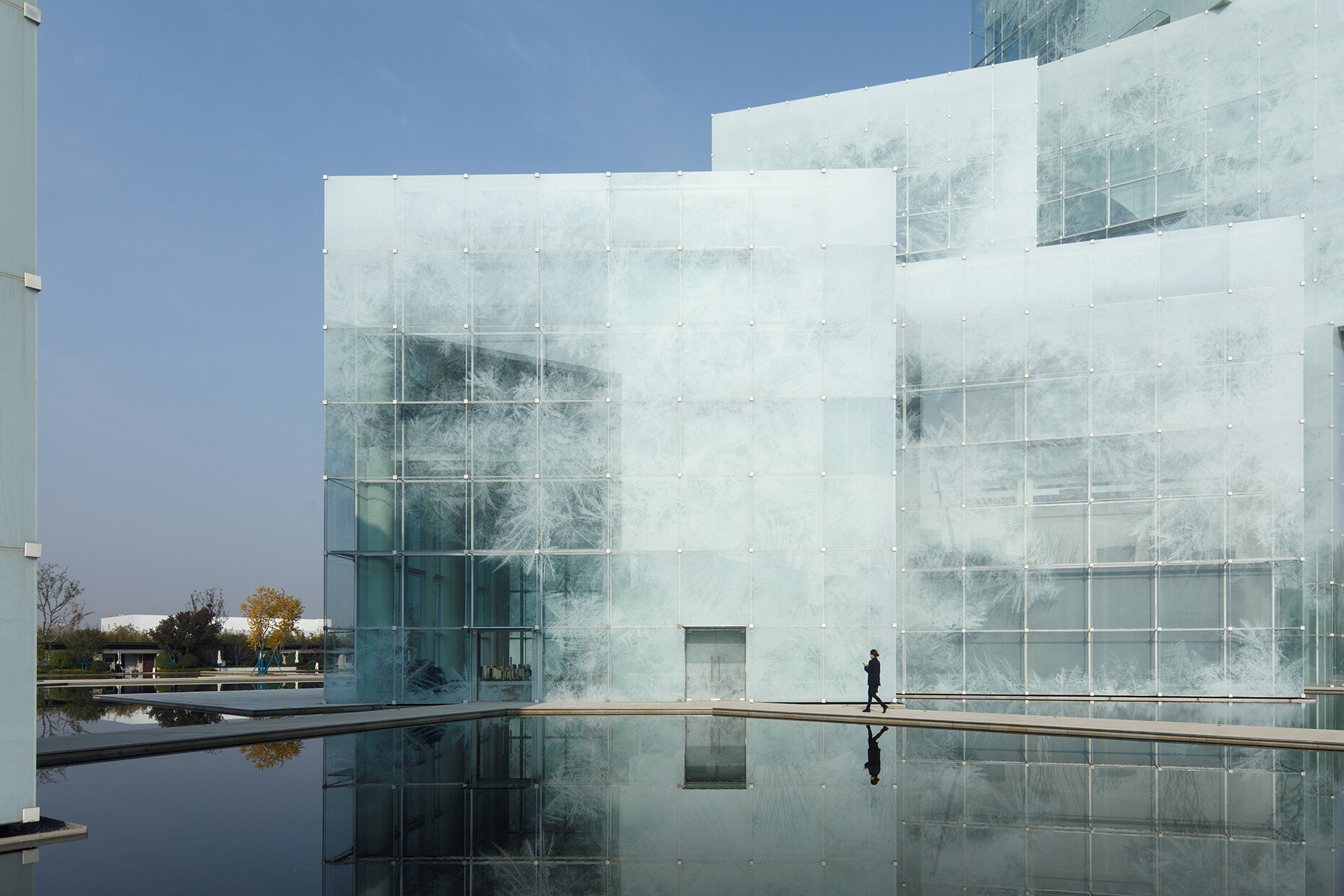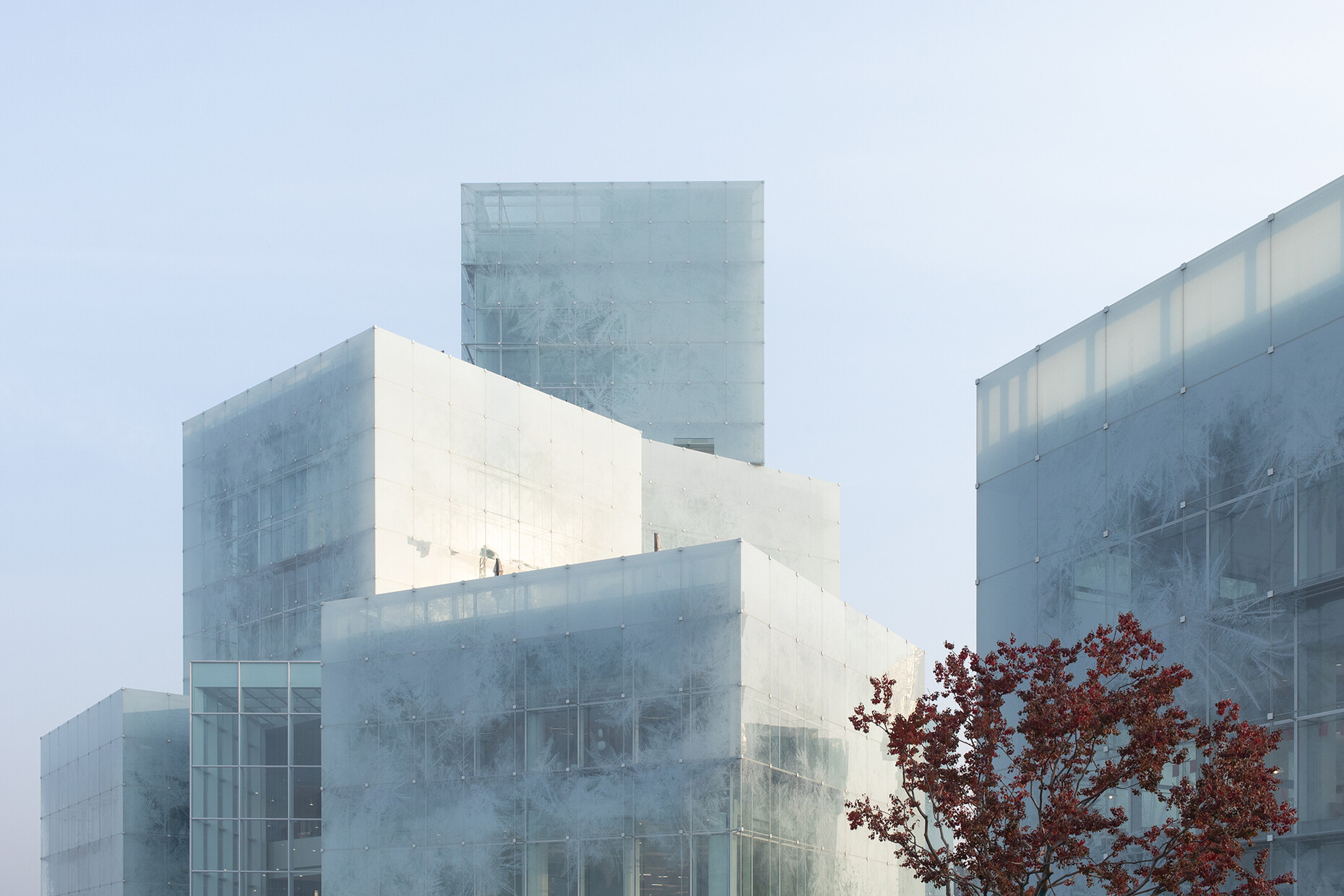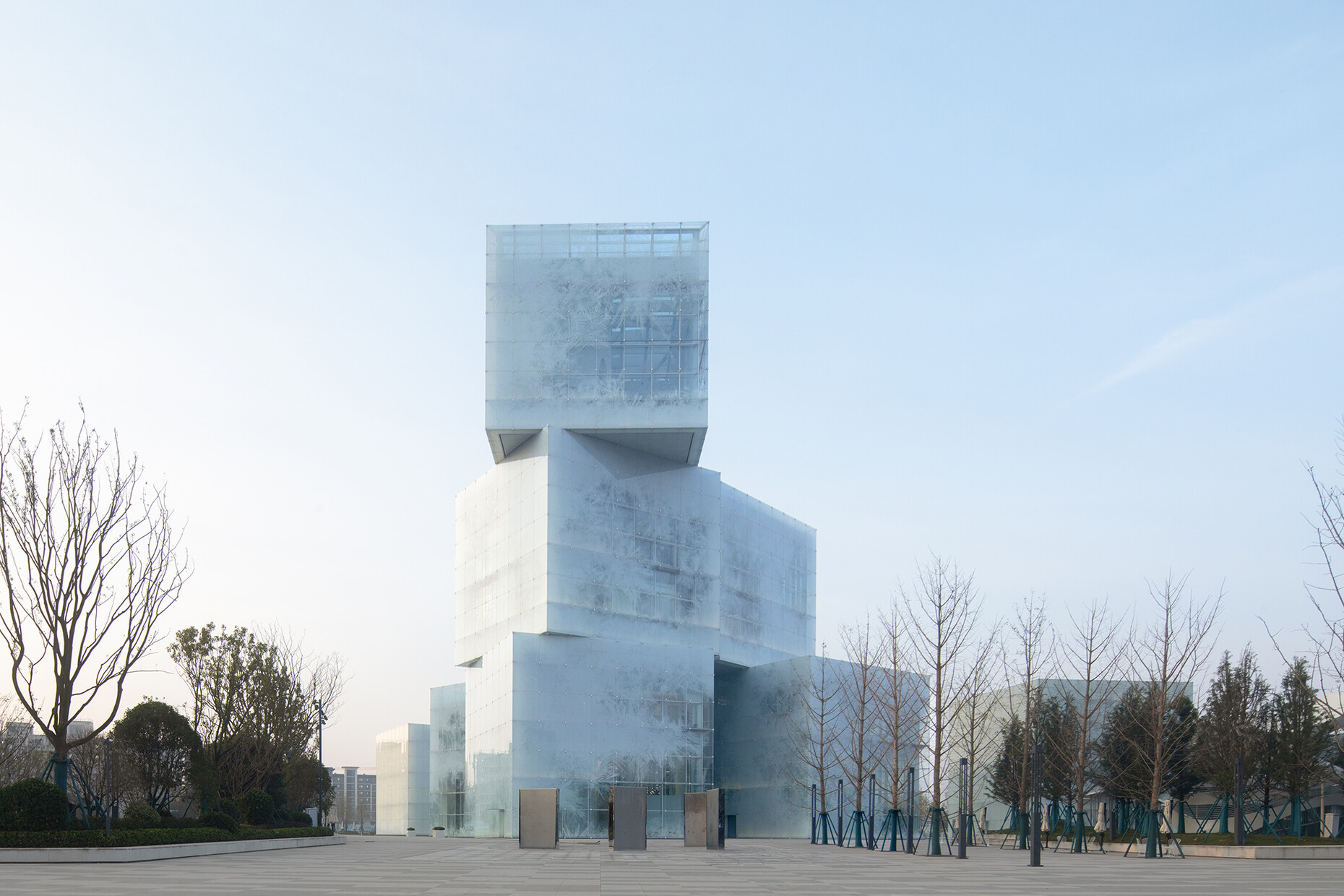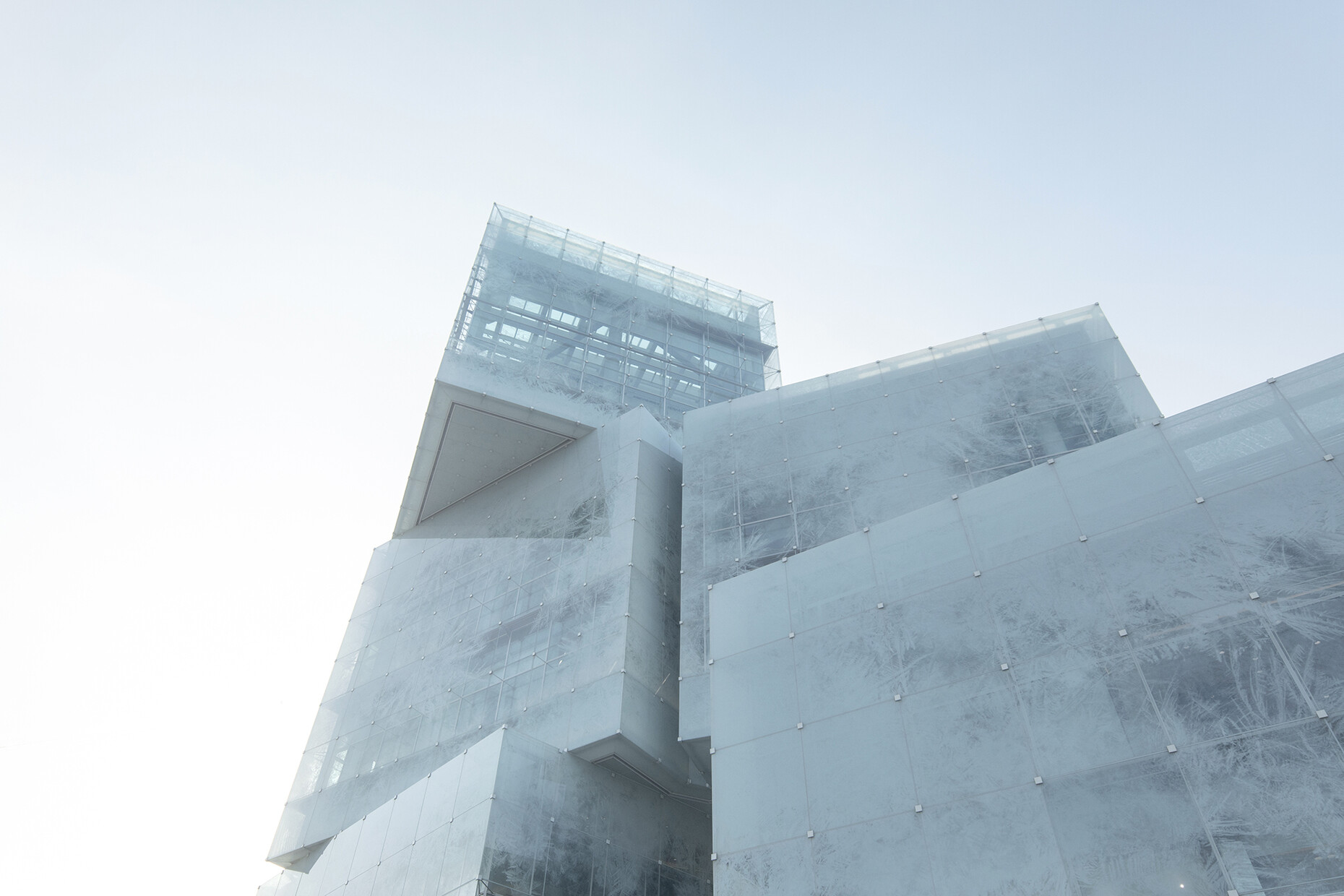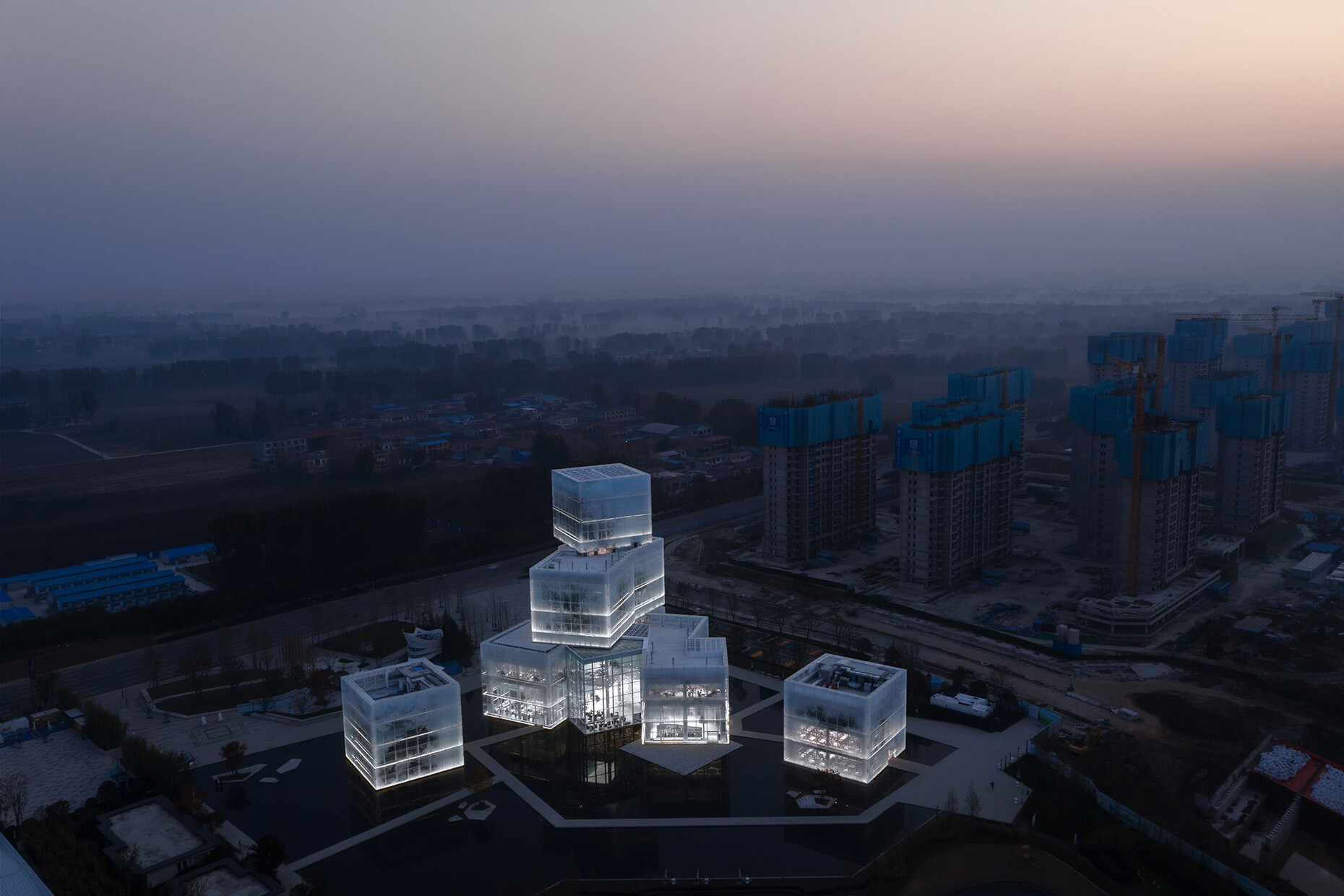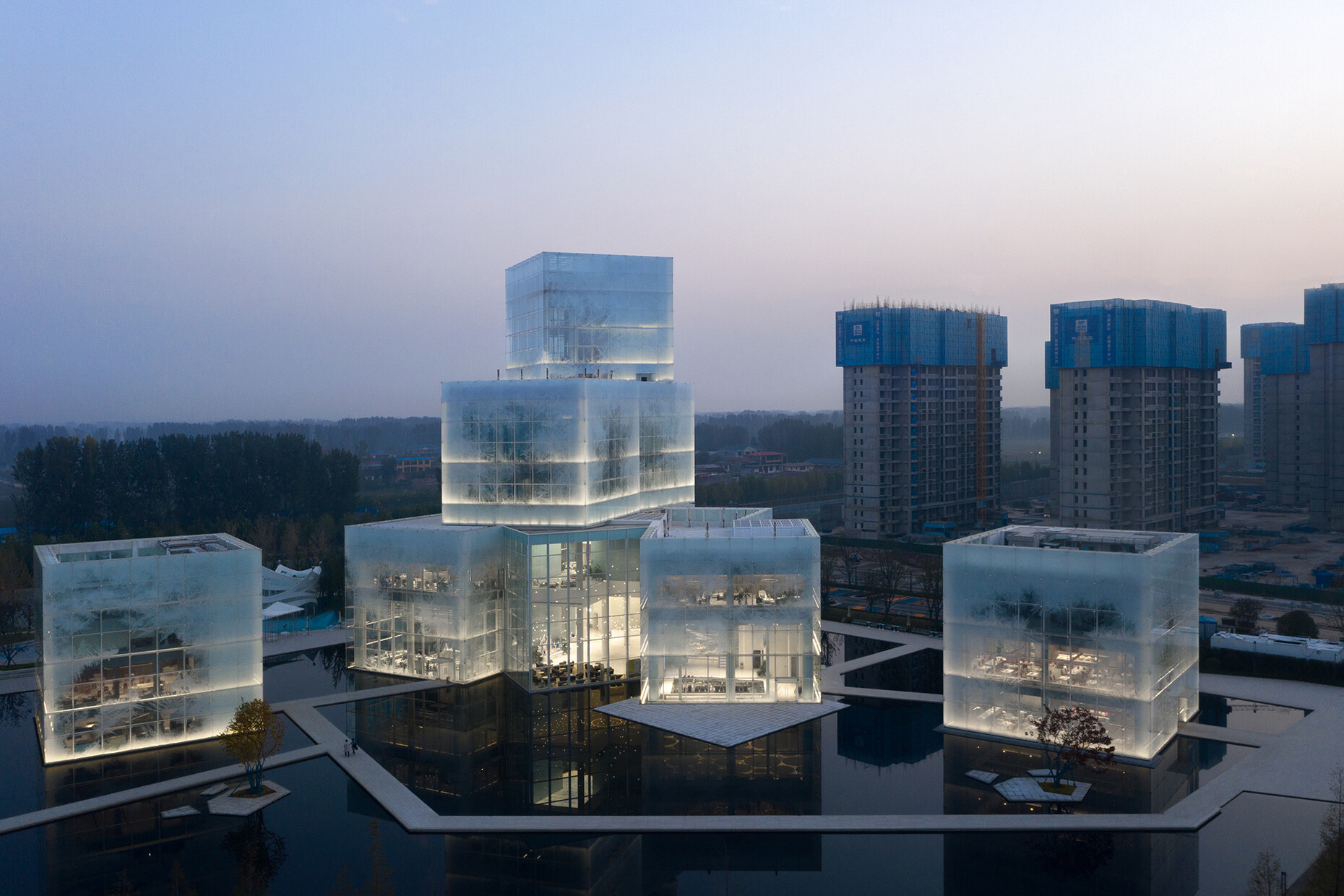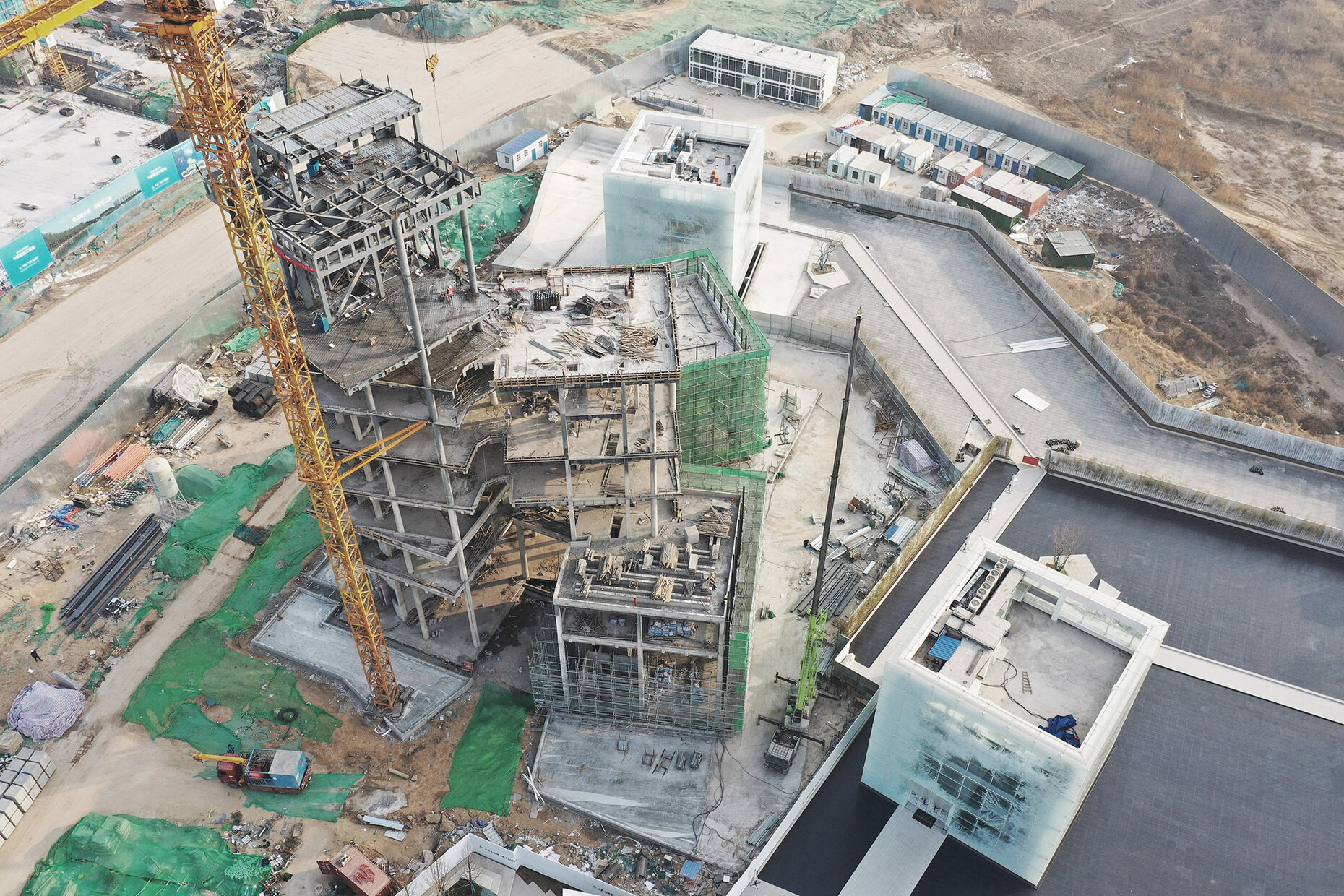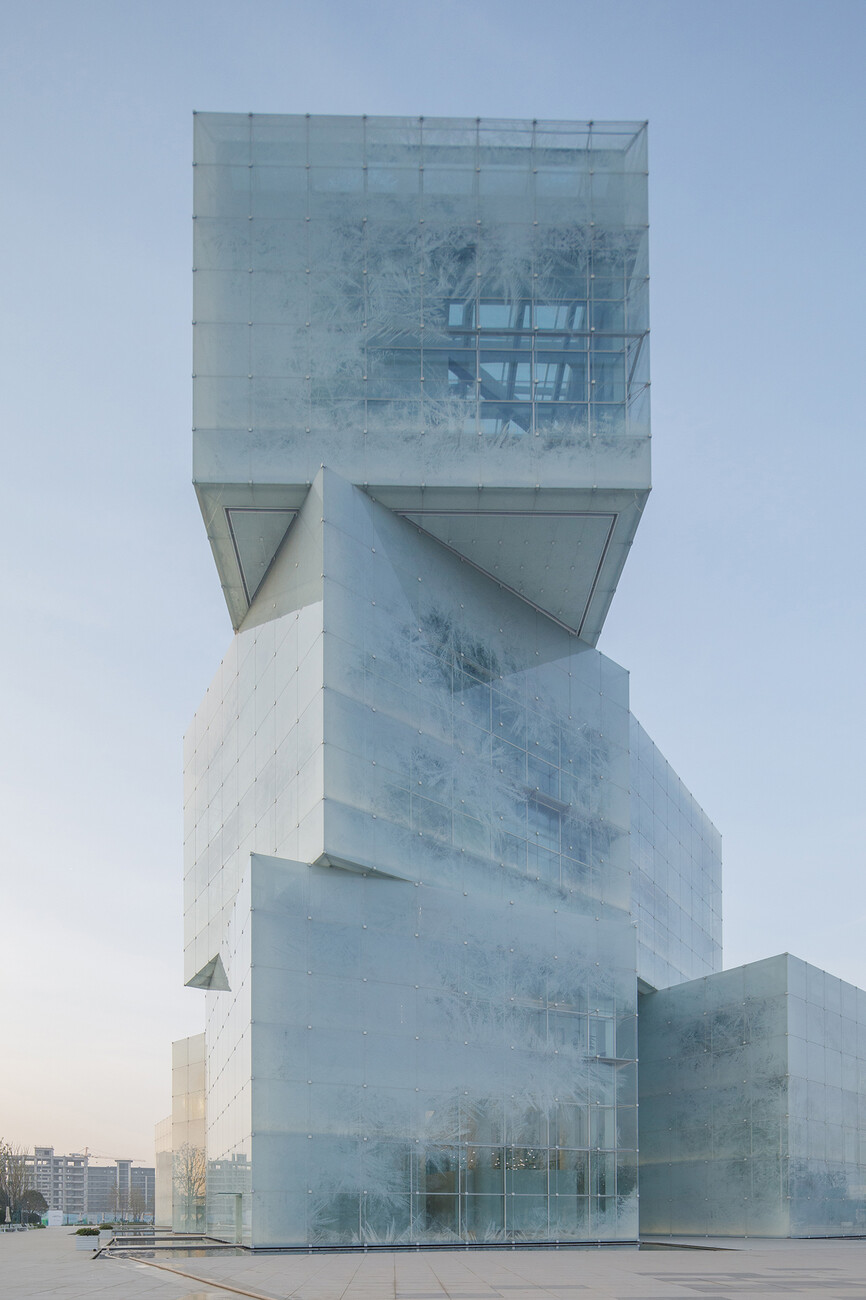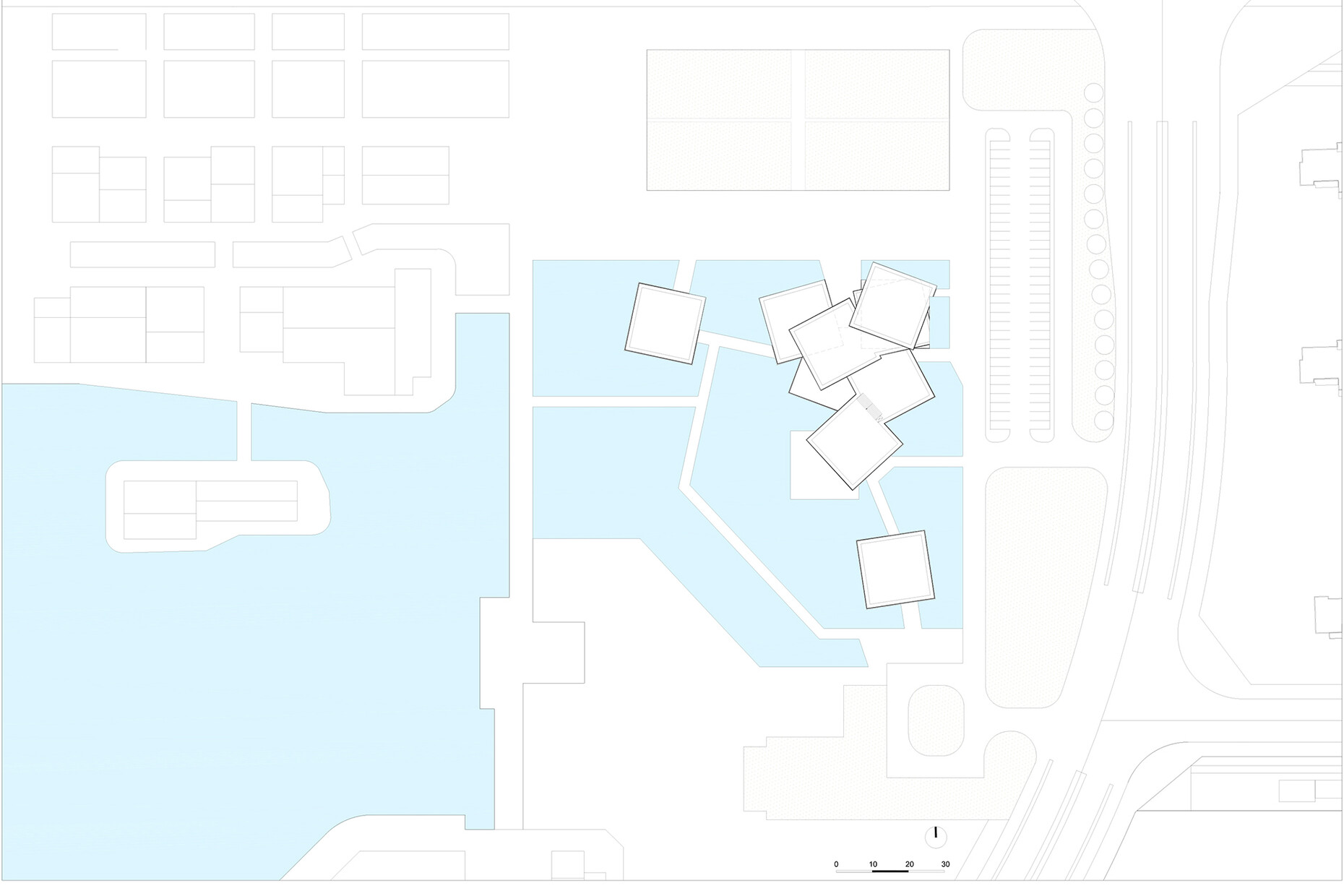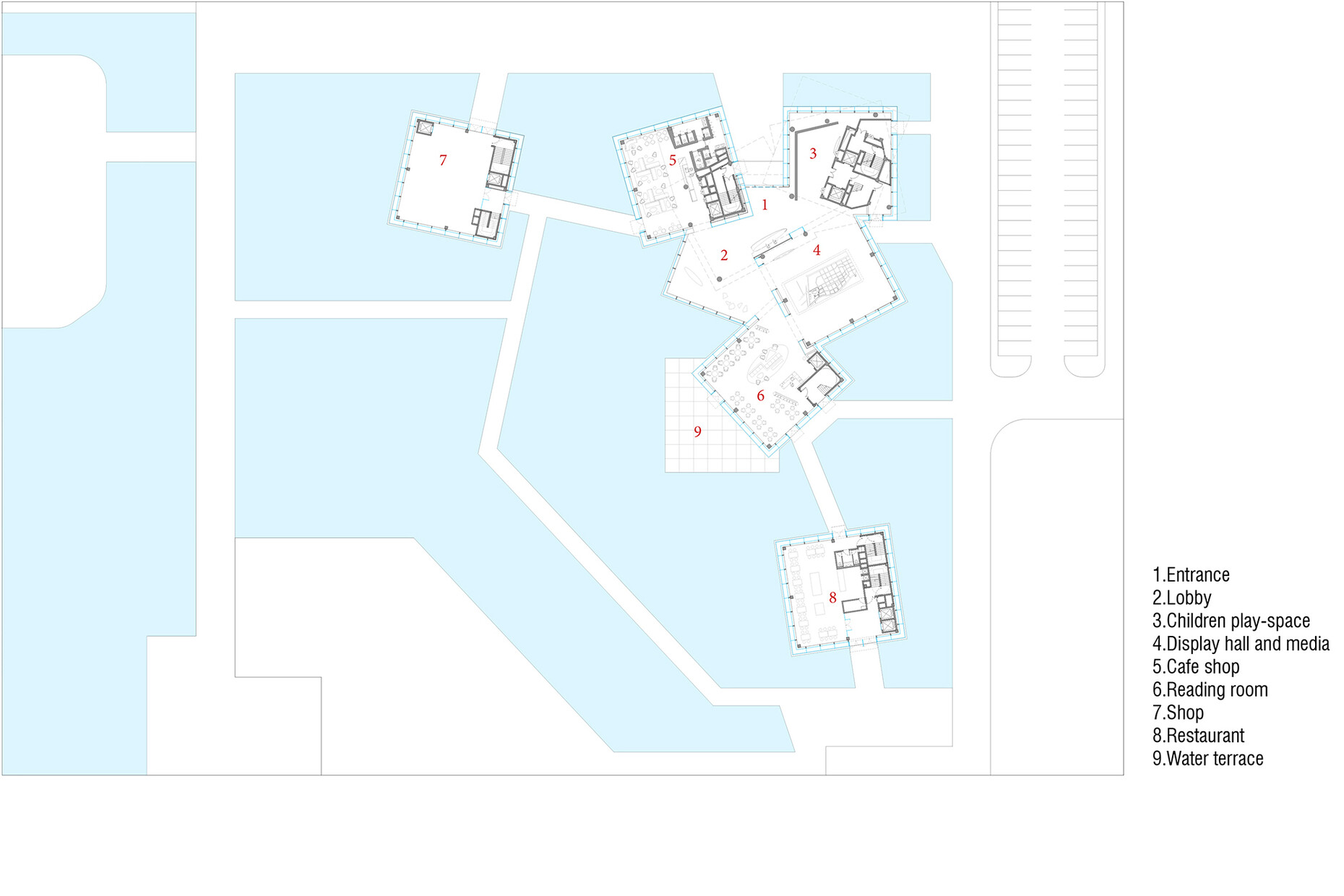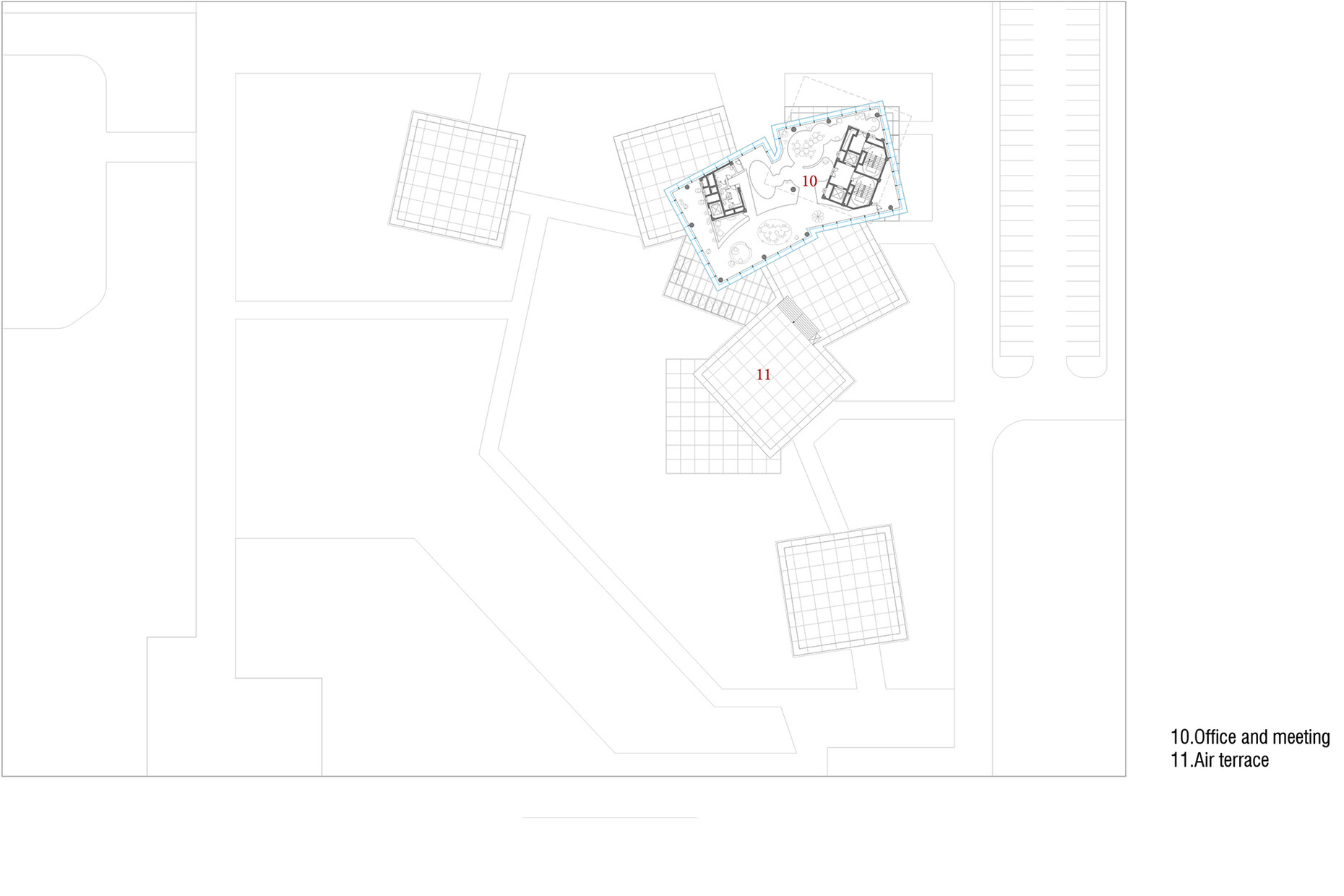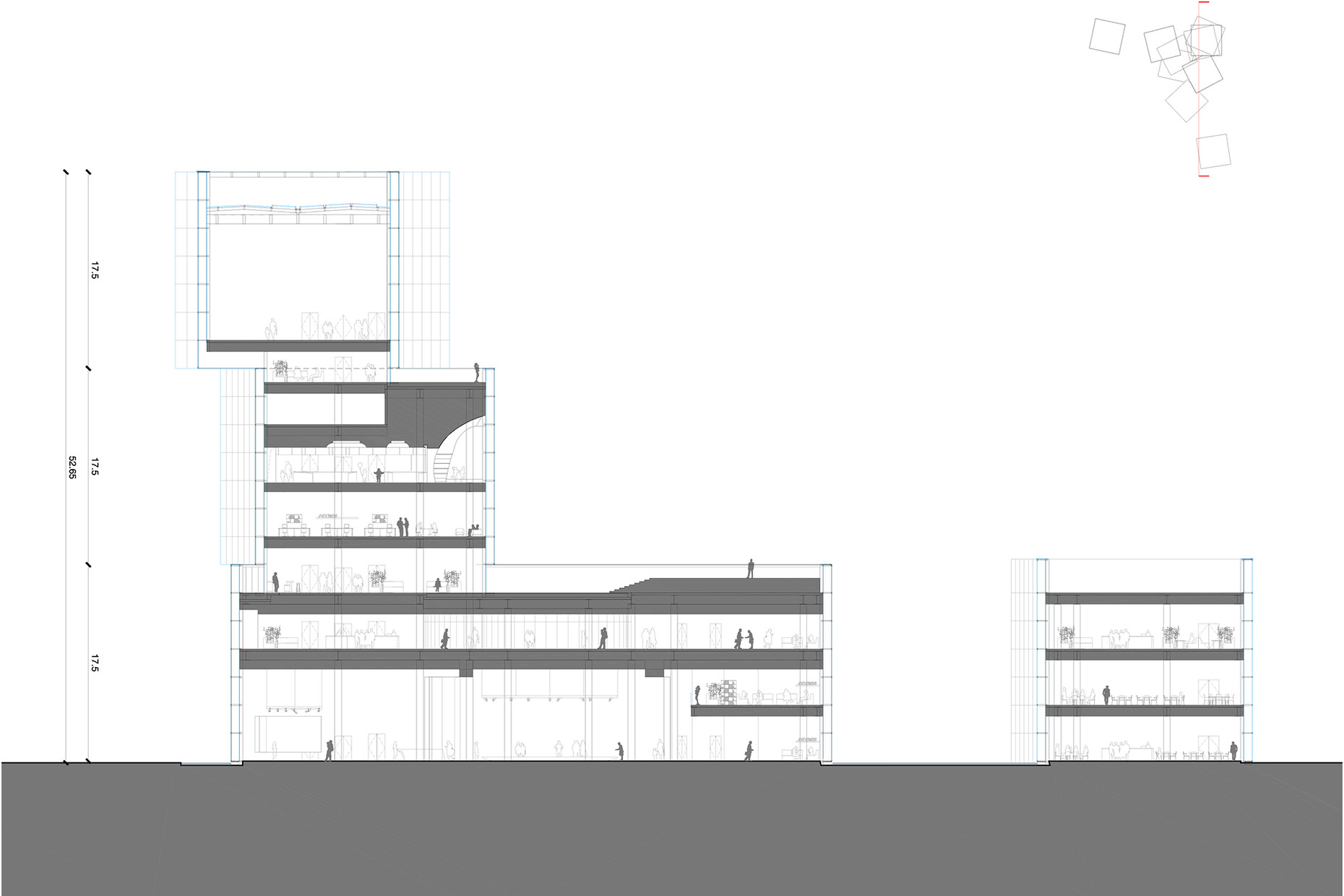The die is cast
Architecture as a tourist magnet – this has been known since Frank Gehry's Guggenheim Museum in Bilbao. The Bilbao effect, which is supposed to transform urban wastelands into flourishing landscapes as an architectural magic trick, has been copied ever since – sometimes with more, sometimes with less success. In China, people still seem to believe in the power of visually stunning buildings, as the Xinxiang Cultural Tourism Center proves. There, Zone of Utopia Architecture, together with Mathieu Forest Architecte, designed an architectural sculpture that, in keeping with its location in a winter sports center, resembles stacked ice cubes.
The architects stacked a total of nine ice cubes inside and on top of each other, which, arranged offset from each other, produce a seemingly fragile structure. This results in multi-layered views that constantly change from different angles and create new perspectives. The iridescent appearance of ice is taken up in the printed glass façade: Its texture is reminiscent of ice crystals, which filter the light and provide changing insights and views. The weather, the time of day and the seasons change the appearance of the architecture, which appears brilliantly white in sunny weather and hazy and dull in cloudy weather. In addition, reflections and mirroring create an interplay of sun and clouds on the facade.
Each of the nine cubes is 17 meters high. The number of floors is not recognizable, which, in addition to the monumental dimensions and the texture of the facade, provides an additional abstraction of the building. In addition, there are several cantilevers, which give the individual cubes the appearance of being literally thrown into the site. The largest projection is the transparent cube at the very top, which acts as a spectacular landmark in the city. It houses a "sky lounge" that provides an unobstructed view of the surrounding Chinese countryside. On the first floor, the nested geometries provide a marker for the entrance area, which results from the free arrangement of the cubes. At night, the glazed ensemble then becomes a lighthouse, which also carries the theme of visual transformation in that it can be illuminated with different colored light.
Structurally, the Xinxiang Cultural Tourism Center is a steel building with a thermal envelope of glass. This is surrounded by an artificial lake on which the building appears to float. On the one hand, this symbolizes the various aggregate states of water, but at the same time it could also be read as an unintentional commentary on the meaningfulness of glazed monumental architecture. It remains to be seen to what extent glass boxes are still ecologically justifiable today – and so, from the point of view of sustainable architecture, the building seems to be melting just like the glaciers in Antarctica.
